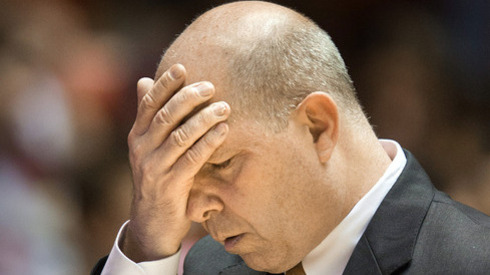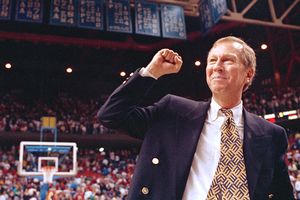Putting Herb Sendek’s Firing Into Perspective
Posted by Andrew Murawa on March 24th, 2015With eight minutes left in Arizona State’s Pac-12 Tournament opening round game, they were up 14 on last place USC and headed for a quarterfinal rematch with UCLA, a team that they had just beaten in Tempe a few weeks before. The Sun Devils needed to win the Pac’s automatic bid in order to earn an NCAA Tournament appearance, but all things considered, the future looked reasonably bright. And then things drastically changed. Arizona State was outscored 21-4 over the final 8:29 of the game by the Trojans, and that seemingly bright future in the desert dimmed significantly. The blown lead a couple of Wednesday nights ago in Las Vegas did not simply mean the end to a season. It effectively meant the end to Herb Sendek’s career in Tempe. After increasing speculation about his position, Sendek was oficially fired on Tuesday. Doug Haller reports that the Sun Devils’ 42-point loss at Utah late in the season opened up the possibility of a change, and the USC debacle cemented it.
First, let’s wrap up Sendek’s career in Tempe. Nine seasons; two NCAA Tournament appearances; a record of 154-132; a conference record of 72-90. He landed the best recruiting class in the history of the school in 2007 when he pulled James Harden out of southern California, beating out schools like UCLA and Arizona for the future superstar’s services. He brought five ESPN top 100 recruits to Tempe and won just a single NCAA Tournament game, a win over Temple in 2009. In a vacuum, none of that is particularly impressive. Okay, so let’s remove that vacuum and give you some context about Arizona State basketball. In 1978, this program, along with Arizona, joined the Pac-8 to create the Pac-10. Thirty-seven college basketball seasons have gone into the books since then, and the Sun Devils have posted conference records of .500 or better 16 times. Sendek coached nine seasons in Tempe and recorded six of those. Bill Frieder is the other coach with any significant recent success at Arizona State – he tallied six .500-or-better seasons in eight years (before resigning in the wake of a point-shaving scandal and numerous other off-court issues). In those 37 seasons, Arizona State has made the NCAA Tournament seven times: twice under Sendek; twice under Frieder, once under Rob Evans; and twice, way back in the early 80s under Ned Wulk.**














































